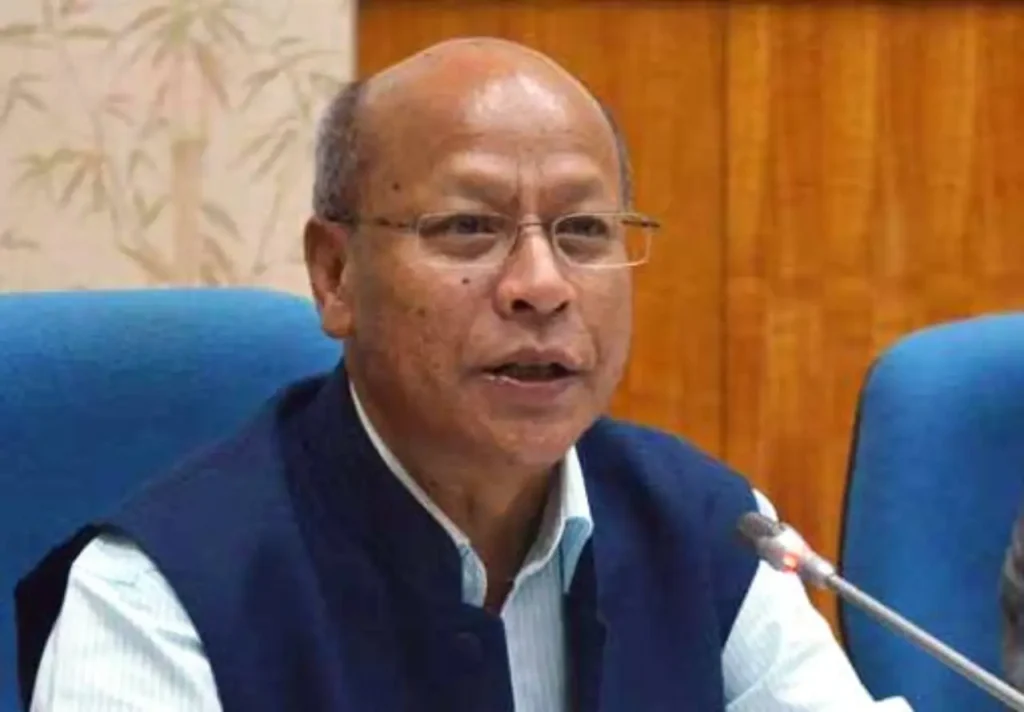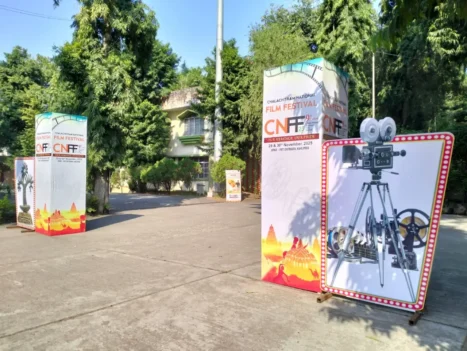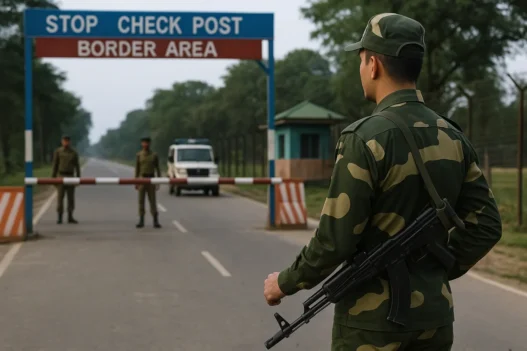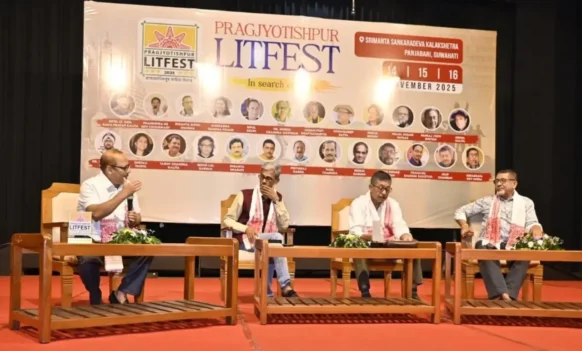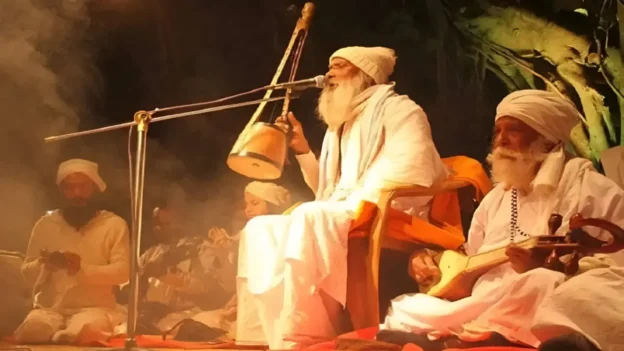The drive to curb illegal infiltration from Bangladesh is not new. However, with the recent political changes in the neighbouring country, governments in the Northeast have stepped up surveillance and monitoring measures. From eviction drives in Assam to intensified checks at the Anti-Infiltration Check Gate in Byrnihat, Meghalaya, state authorities have been expanding their efforts to detect and prevent cross-border migration.
What stood out at Byrnihat, as this writer crossed the check gate today (August 18), was not only the presence of police personnel conducting routine checks of vehicles and passengers, but also the active involvement of local men, mostly in their 20s and 30s, who were questioning passengers alongside officials. While it was difficult to confirm whether passengers were harassed, the very nature of such questioning raises concerns about whether these practices align with the legal framework governing infiltration checks.
In the past week, suspected illegal migrants were checked at the Byrnihat gate by members of the Hynniewtrep Youth Council (HYC), operating in coordination with the state’s infiltration department. Reports suggest that individuals unable to produce valid documents were asked to return to their place of origin, while those with proper identification were allowed to proceed into Meghalaya.
These developments come amid remarks from Charles Pyngrope, former Speaker of the Meghalaya Legislative Assembly and current state president of the Trinamool Congress. Pyngrope acknowledged that concerns over illegal migration are genuine, but cautioned against branding every outsider as an infiltrator. He argued that while strong vigilance is necessary, monitoring must be conducted carefully to ensure that infiltrators are identified without causing hardship to innocent citizens.
According to Pyngrope, enforcement of existing laws must be rigorous, but effectiveness ultimately depends on community participation. He suggested that traditional institutions such as the Nokmas, Dollois, and Rangbah Shnongs should play a greater role in monitoring, thereby strengthening both vigilance and accountability.
His concerns are not misplaced. Over the years, there have been several instances which has raised concerns among tourists and the regular visitor. The issue is further underscored by Meghalaya’s growing reputation as a tourist destination. Visitors from West Bengal, Assam, Tripura, and other states are drawn to Shillong not only for its natural beauty but also for its cultural and historical connections to figures like Rabindranath Tagore, Swami Vivekananda, and Subhas Chandra Bose.
At the same time, the decades-old concern of infiltration from across the Bangladesh border remains real. In the wake of the political upheaval in Dhaka, reports of renewed attempts at infiltration have surfaced, underscoring the need for vigilance. In response, the Meghalaya government has urged the Union Home Ministry to persuade Bangladesh to allow fencing closer to the international boundary.
Deputy Chief Minister Prestone Tynsong explained that the demand stems from security concerns along a 40-km unfenced stretch. Under international norms, fencing is typically constructed 150 yards inside a country’s territory. However, in Meghalaya’s case, this would leave several villages in a vulnerable “no man’s land.” Tynsong stressed that the state’s priority is to protect its people while ensuring the integrity of its borders.
Meanwhile, the state government has been exploring a new law to address infiltration more comprehensively. Pyngrope has supported the idea of strengthening monitoring mechanisms as part of this legislative initiative, stressing that robust monitoring will allow the state to detect infiltrators without unjustly targeting individuals.
This concern over wrongful targeting is significant. Many Indian citizens who share linguistic, cultural, or religious similarities with Bangladeshis have faced harassment under suspicion of being infiltrators. Human rights activists point out that in some cases, individuals wrongfully detained or displaced were migrant labourers from other Indian states, working on government or private construction projects in Meghalaya.
Activists also highlight that while infiltration does occur, the methods employed to address it often risk displacing vulnerable populations or misusing the law. For them, the central challenge is not the denial of infiltration but ensuring that responses do not lead to violations of rights.
The logistical challenges of preventing infiltration remain daunting. Despite the modernization of the Border Security Force (BSF), with night vision cameras and advanced surveillance equipment, reports of infiltration and smuggling persist along the India-Bangladesh border, particularly across stretches in North and West Bengal.
In Meghalaya, recent vigilance at Byrnihat is partly linked to fears that individuals displaced during eviction drives in Assam are attempting to enter and settle in the state. Security officials have indicated that some of those displaced are seeking refuge in neighbouring states, including Meghalaya.
Deputy Chief Minister Tynsong has instructed all deputy commissioners and superintendents of police to adopt proactive measures across the India-Bangladesh border, from East Jaintia Hills to Dalu in Garo Hills. Joint operations involving the BSF, Meghalaya Police, and Village Defence Parties (VDPs) have been launched to secure exit routes and detect potential infiltrators.
“We are alert and I am very sure our police force will be able to nab and also to push back those infiltrators,” Tynsong said, noting that a report on recent arrests has already been submitted to the Union Ministry of Home Affairs. However, he refrained from commenting on the propriety of local organizations conducting infiltration checks alongside police personnel — a matter that continues to draw debate within the state.

